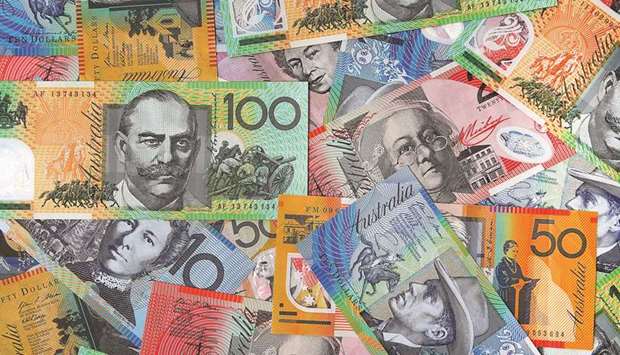Hedge funds are ratcheting up wagers on the Australian dollar – in both directions – after it became the most-volatile Group-of-10 currencies in the past month.
“It’s one of the best times to trade,” said Nader Naeimi, who has short positions on the currency at the dynamic market fund he manages at AMP Capital Investors. “A lot of the good news is priced in the Aussie now so there’s room for disappointment. That said, it’s still so influenced by risk-on, risk-off sentiment so it gives you room to trade.”
Geoff Wood, head of macro and risk at Morphic Asset Management in Sydney, said he’s selling the Australian dollar when it climbs to 72 US cents and buying it back when it dips into the high 60 US cents range. Brett Gillespie, a macro trader at Ellerston Capital, recently closed out some short Aussie versus Singapore dollar trades that he used to neutralise the risk to his fund from a potentially positive US-China trade outcome.
The increase in the Aussie’s volatility has come as competing factors whipsawed a currency sensitive to global economic uncertainties that have escalated amid a trade war with an as-yet-unknown outcome.
With Australia the world’s largest iron ore exporter, the Aussie is considered a proxy for world growth and tends to do well when risk appetite is buoyant and falter during risk-off episodes.
As such, there is plenty vying for the spotlight in the Aussie trade, including:
n Signs of a reversal in iron ore prices that were surging since early December
n Caution from the Reserve Bank of Australia on growth and inflation
n The US-China trade war talks that are ongoing in Beijing
n Interest rate differentials and a swaps market now leaning to an RBA cut in 2019
The Aussie slid almost 10% against the dollar last year to become the worst-performing developed-nation currency as a deepening US-China trade war and rising Federal Reserve interest rates sapped demand for high-beta assets. While it has clawed back some of those losses in 2019, it faces renewed pressure as central banks from Australia to Europe turn dovish.
The volatility makes for good trading opportunities, according to Morphic’s Wood.
“If it rallies up and people get impatient and start covering their shorts, then you can be the one that sells the Aussie,” Wood said. “You can get an OK risk reward at that point.” The Aussie has swung between gains and losses this week, as traders were swayed by developments in the trade talks. Optimism that a resolution is nearing dimmed amid reports that the negotiations this week are set to wrap up with few signs of progress. Still, such a melting pot of signals means not everyone is convinced the Aussie is worth a big bet. For Ellerston’s Gillespie, who worked at Tudor Investment Group for more than 11 years, it’s “a polluted trade” with multiple currents pulling it in different directions.
“Sentiment is so beared up,” Gillespie said. “You’ve got a few moving parts on the Aussie dollar and over the course of the next month you could have a scenario where either rate-cut expectations build or not and whether the trade talks go well or not.”
“On a macro basis, in the 0.69 to 0.68 area the Aussie becomes compelling longer term for a China recovery,” although it would also face more volatility, said Thomas Schroeder, founder and managing director at Chart Partners Group, a firm that provides technical research to asset managers including hedge funds.
For his part, Mark Dowding, a London-based money manager at BlueBay Asset Management LLP, is opting to stay on the sidelines. While the Aussie may get a boost from strong commodity prices, it is equally at risk of sliding if the nation’s domestic fundamentals weaken, he said.
“We are also very concerned about the housing market slump and this creates further downside risks,” said Dowding, who helps oversee $60bn in assets. “On balance, this leads us to be neutral on Aussie for now.”

Hedge funds are ratcheting up wagers on the Australian dollar, in both directions, after it became the most-volatile Group-of-10 currencies in the past month
